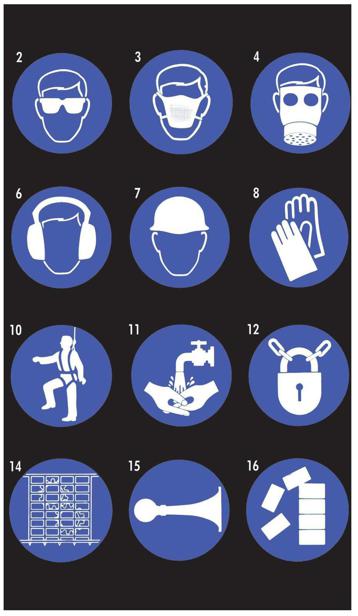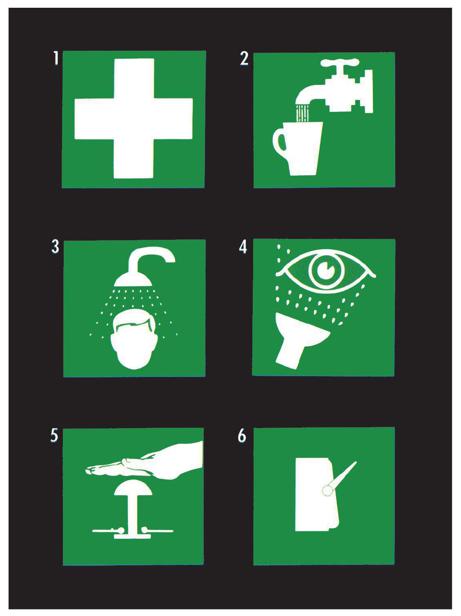SAS Urban Survival Handbook (105 page)
Read SAS Urban Survival Handbook Online
Authors: John Wiseman
Tags: #Health & Fitness, #Reference, #Survival, #Fiction, #Safety, #Self-Help, #Personal & Practical Guides, #General, #Survival Skills

5▶Sandfly
Phlebotomus
species Chiefly tropical—common in parts of Asia, Africa, Central and South America and Mediterranean areas. Bloodsucking adults with long slender legs give a painful bite that can transmit sandfly fever, leishmaniasis—an often malignant disease with various forms affecting about 12 million people. Control: Insecticide spray and repellent-treated screens. Seek local specialist advice.
6▶Mosquito
Anopheles
species Of all insects, these two-winged flies of the tropics, sub-tropics and warm temperate regions, cause man the most illness, economic loss and discomfort. Carriers of malaria, yellow fever and worm diseases such as elephantiasis. Control: Screens and fumigants. If visiting a risk area, seek medical advice in advance.
7▶Human flea
Pulex irritans
One of 2000 different kinds of flea. When vibrations/warmth signal approach of potential host, a flea can leap several times its own length to feed. Most fleas are host specific, but will sample other hosts if the opportunity arises, making them dangerous vectors of some diseases and parasites.
8▶Human lice
Pediculus humanus
Sucking lice are living hypodermic syringes, transmitting diseases from infected hosts to healthy ones. A louse feeds almost hourly, making a new puncture and causing a new itch each time. Body lice (A) usually live on underclothing, head lice (B) cement their eggs (‘nits’) onto the host’s hair. A single female may lay 300 eggs in a month. Control: Wash clothes regularly. Use special shampoo. Check and recheck, treat again as necessary.
9▶Pubic lice (Crabs)
Phthirus pubis
Usually live in public hair, in the armpits, sometimes in other body hair including the eyebrows. They are an irritant, but not a vector.

WOOD-BORING INSECTS

1▶Woodworm
(Common furniture beetle)
Anobium punctatum
Common name for a small flying beetle or its larvae, which bore through wood. The exit holes are 1.5-2 mm (1/16 in) across, surrounded by small lemon-shaped pellets. Fresh clean holes and dust (in warmer weather) indicate current activity. See also SAFETY FIRST:
Rot/infestation.
2▶Deathwatch beetle
Xestobium rufovillosum
Found in Europe and parts of the US. Larvae tunnel into dead or partly decayed wood, structural timbers and furniture. By the time they are detected, by presence of 3 mm (1/8 in) exit holes with coarse rounded pellets or clicking sound adults make by banging their heads against the wood, serious damage may already have been done. Not common.
3▶House longhorn
(Old house borer)
Hylotrupes bajulus
A very destructive beetle found worldwide in warm conditions, named after its two long antennae. The larvae bore through seasoned softwoods. It is claimed that their activity is audible. Oval exit holes, 10×6 mm (3/8×1/4 in) are surrounded by a cluster of fairly large, compact wood-dust pellets. Larval stage lasts 11 years, allowing time for considerable damage.
4▶Powder post beetle
(Auger beetle/Shot hole borer)
Lyctidae.
Found worldwide, so called because of the dry, powdery dust extruded from burrows when adults emerge. Exit holes circular, 1.5 mm (1/16in). Tends to attack seasoned or dry timber. New timber may be affected.
5▶Termite
Reticulitermes
species Typical of the numerous species found worldwide in warmer regions. Some species cause widespread damge to homes, outbuildings, fences and posts and are viewed as a serious problem in (at least) the US, Africa and Australia—although at least two species have become established in parts of Europe, particularly around the Mediterranean. Most species have the same or similar members—
Reticulermes
are typical with soft pale-bodied workers (A), which process the wood. Other members of the colony usually only eat ‘secondhand’.
The soldiers (B) may have very large jaws (some species have smaller jaws and a horn-like extension on top of the head). Either type is capable of exuding a repellant, possibly caustic, secretion to deter attackers. Winged adults (C) have darker bodies and swarm in great numbers in the mating season. They fly off to start new colonies (often only over a short distance). When they land, their wings become detached but may be seen glistening on the ground.
Depending on species and the size of the colony, they may nest in dry, damp or rotten wood or build large galleries underground (sometimes with large ‘ventilation’ tubes above ground). Some, reliant on moisture and darkness, may construct easily-visible extension tubes as tunnels to reach wood above ground without having to expose themselves to sunlight.
Termite infestation should be taken very seriously. Treatment should be done by specialists, and may involve spraying of timbers and soil, digging in and destroying nests and replacing timbers.
6▶Carpenter ant
Camponotus
species Large brown/block ants found in the US, continental Europe and Asia. Live in wood and chew out burrows. Easily mistaken for termites. Reproductive winged members of the colony leave in a swarm to form new colonies. Piles of broken-off wings a clue to their presence—other indications: slitholes in wood with faeces resembling sawdust outside. They leave nests to scavenge for food. Partial to sugar.
7▶Carpenter bee
Xylocopa virginica
A tunnelling bee, it resembles a very large bumblebee. It makes a single large hole, 2 cm (3/4 in) in diameter, turns through 90° and excavates extensive galleries (which run with the grain of the wood), in which to lay eggs. Length: 2.5 cm (1 in).

READING THE SIGNS
We are surrounded by symbols which try to instruct us or alert us to danger. They are usually accompanied by an appropriate message or explanation of a specific hazard.
In general, safety signs fall into four categories. A blue sign indicates that the message is mandatory and must be obeyed. Green symbols offer instructional guidance on safety and safeness. A yellow and black triangle is an alert to danger—a warning of a slip hazard perhaps. A red symbol with a diagonal line through it means ‘Oh no you don’t’!
Most of the following examples can vary in meaning—always read the accompanying message. Before you read the explanatory notes, see how many you understand.
WORK HAZARDS
Workers, visitors and even the general public may be at severe risk.
1▶
An exclamation mark is a general hazard warning. Read the accompanying message.
2-9▶
All warnings that protective gear is required must be obeyed, or preferably exceeded. There may be a risk of permanent physical damage.
10▶
Wear a safety harness. This may apply on scaffolding, on a rig, on the framework of a tall unfinished building. Don’t take chances!
11▶
Now wash your hands. Sometimes seen on the exit door from a lavatory—but may indicate that you should wash toxic/harmful substances from your hands before going to the lavatory or eating.
12▶
Keep locked. May restrict access for security or safety reasons.
13 & 14▶
If your machine has a fixed or removable guard, use it!
15▶
Sound your horn. Forklift and other vehicle drivers should alert pedestrians and other drivers of their presence.
16▶
Stock correctly. Heavy boxes or crates may come crashing down on you. There may also be a danger of goods lower down in the ‘pile’ being crushed.



WORK GUIDANCE
You MUST know the dangers of your job—and how to deal quickly with accidents.
1▶
First-aid symbol. Should be clearly displayed.
2▶
This is drinking water. If cancelled by a diagonal stroke or a cross, the meaning is reversed—do NOT drink.
3▶
Emergency showers—or simply showers, if a full wash is required after working with hazardous materials.
4▶
Emergency eyebath/eye-washing station.
5▶
Emergency stop. Hit the button!
6▶
This is the main switch. It will deactivate the machine/a group of machines/a whole department /the whole workplace.